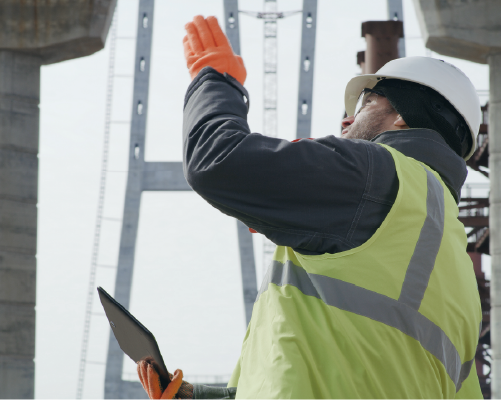Getting the Most Out of a Construction Phase Plan
0%
If you’re involved in construction planning in the United Kingdom today, then you probably already know that you need a construction phase plan, and it’s probably on your pre-project to-do list.
And if you’re like most construction management professionals, there are probably a lot of other things on that list, so you might not be spending as much time on the construction phase plan simply because you have so much else to do.
However, construction phase plans are far more than just another empty box on your project kick-off plan checklist. Here’s why you should take extra time on this critical piece of the construction planning process.
Do We Need a Construction Phase Plan?
According to the requirements of CDM 2015, every construction project that happens in the United Kingdom – regardless of the size or duration – must have a construction phase plan.
If you plan to do any construction of any kind on any site in the UK, you need a construction phase plan for that project and that site.

The Roles, Duties, and Responsibilities Within a CPP
Probably the most important thing you need to know about a CPP is that everyone involved in any project in any capacity has some kind of duty or responsibility for developing and implementing a site safety plan for that project.
Domestic clients are possibly the only type of duty holder in the CPP process who typically cede most or all of their responsibility for the CPP process to their appointed contractor, and that is primarily because domestic clients don’t know enough about the construction process to take that kind of responsibility.
However, commercial clients have a duty to provide enough information to contractors and construction professionals. Designers have a responsibility to design the project in a manner that is as safe as possible for the construction crews who will do the work. Even the company who is the principal contractor, general contractors who work for them, subcontractors, and workers on site have some level of responsibility for creating, implementing, and managing the evolution of the CPP for every project.
The golden rule when it comes to health and safety in construction and the construction health and safety plan is that there is no one involved in any project in any capacity that does not have a responsibility to make sure everyone goes home safely every day.

Putting the CPP Into Practice On-Site
One of the most common reasons that construction phase plans fail to protect people adequately is that sometimes, there’s an attitude of “set it and forget it.” Busy construction managers, safety coordinators, and other members of the team tasked with planning for construction work and the health and safety file forget that even the best plans cannot succeed if they’re not followed.
Constant monitoring, regular updates, and revisions where necessary are the key to taking the ideas and strategies out of the health and safety file and ensuring that they are implemented on-site.
Your construction health and safety plan’s success or failure is literally in the work-gloved hands on your job site. There are a few ways you can ensure that your on-paper CPP translates into real on-site safety, including:
- Use a field tool that requires daily updates from the field and a corresponding action from your office team – this creates accountability and can help to ensure everyone stays compliant.
- Appoint responsible people on site who are tasked with enforcing site rules – including disciplinary action where necessary.
- Educate your people about the importance of health and safety on construction sites and how every individual is an active participant in the CPP.
- Use a CDE that allows you to share the most up-to-date construction documents and drawings with on-site management so that they can adjust plans as necessary.
- Create a clear audit trail of all your important health and safety and other reports and documents.
- Manage and monitor changes to specifications, materials, and the scope of work, and adjust your CPP as necessary to accommodate those changes.
Health and safety in construction is not something you do once and review every two weeks. It’s something that happens every moment of every day on-site. It’s about everyone involved in the project making the best possible choices. It’s about providing your team with the right tools for the job and teaching them how to be as safe as possible.
A construction phase plan might seem like just another item on your to-do list, but it could be what prevents a tragedy on your next job site. So take a little extra time and make construction risk management a core process in your business.



